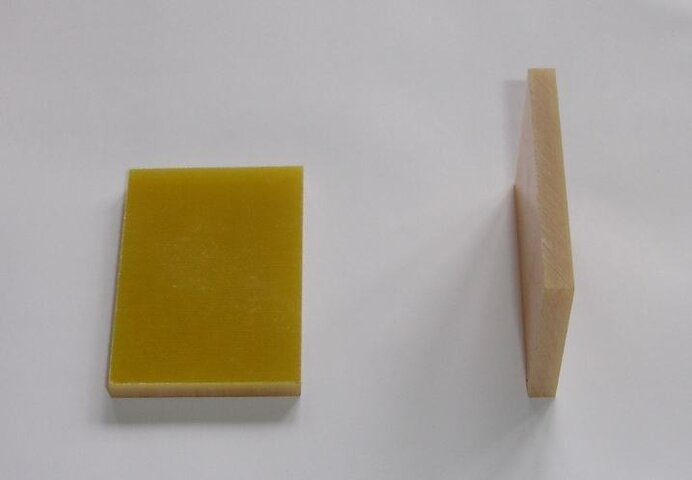Recently, I have come accross the word "Dielectric" being associated with LNBs. What advantage if any do LNBs with Dielectric have over those without Dielectric. What material is used to achieve Dielectric and how is it used as it applies to LNBs. Anyone with a sample picture of an LNB with Dieletric? 
LNBF with Dielectric.
- Thread starter Babadem
- Start date
- Latest activity Latest activity:
- Replies 9
- Views 12K
You are using an out of date browser. It may not display this or other websites correctly.
You should upgrade or use an alternative browser.
You should upgrade or use an alternative browser.
- Status
- Please reply by conversation.
Dielectric plates are used with Linear C-Band LNBs to convert them to receive circular broadcasts. (Mainly Atlantic Satellites).
EDIT - Images in a few minutes.
EDIT - Images Added.
EDIT - Images in a few minutes.
EDIT - Images Added.
Attachments
Last edited:
Thanks qwert1515!!!!Dielectric plates are used with Linear C-Band LNBs to convert them to receive circular broadcasts. (Mainly Atlantic Satellites).
EDIT - Images in a few minutes.
EDIT - Images Added.
Of what material is the Dieletric made from?
I believe it's made out of Teflon.
Circular C-band on the Atlantic sats are mainly Spanish Channels from South America and are located at the farthest eastern arc positions , I'm interested in them but I believe most C-banders have their buds from 72.0 - all the way west.
I also believe it is teflon.
You can do the same with a Ku-Band LNB but the only satellite that is circular and in the same frequency range as a standard LNB (11700 - 12200) is 118.7°W Anik F3 Ku (Used by Dish Network).
The only free channel on that satellite is a channel saying that you are pointed at that satellite.
Post #3 shows my spectrum scan before the plate is added and after. (I cut two tennis ball can lids to make the dielectric plate )
)
Circular to linear.
You can do the same with a Ku-Band LNB but the only satellite that is circular and in the same frequency range as a standard LNB (11700 - 12200) is 118.7°W Anik F3 Ku (Used by Dish Network).
The only free channel on that satellite is a channel saying that you are pointed at that satellite.
Post #3 shows my spectrum scan before the plate is added and after. (I cut two tennis ball can lids to make the dielectric plate
Circular to linear.
I also believe it is teflon.
You can do the same with a Ku-Band LNB but the only satellite that is circular and in the same frequency range as a standard LNB (11700 - 12200) is 118.7°W Anik F3 Ku (Used by Dish Network).
The only free channel on that satellite is a channel saying that you are pointed at that satellite.
Post #3 shows my spectrum scan before the plate is added and after. (I cut two tennis ball can lids to make the dielectric plate)
Circular to linear.
Incredible!
The Teflon has to be wide enough to fit tightly in the LNB, for depth the plate has to cover the dipole rods inside the LNB (One dipole rod is for H and the other is for V polarities, with the plate it converts the H to L and the V to R polarities).
Any piece of flat thick plastic cut to size (thickness of old cassette tape box cover or similar) seems to do the same job.
Thanks!The Teflon has to be wide enough to fit tightly in the LNB, for depth the plate has to cover the dipole rods inside the LNB (One dipole rod is for H and the other is for V polarities, with the plate it converts the H to L and the V to R polarities).
Thanks! That's incredible.Any piece of flat thick plastic cut to size (thickness of old cassette tape box cover or similar) seems to do the same job.
Question: Looking at www.lynsat.com how can you tell the FSS-Circular birds?
Question: Looking at www.lynsat.com how can you tell the FSS-Circular birds?
I'm pretty new at reading Lyngsat so there may be another way, but if you look in the "Freq. Tp" column there will be an "R" or an "L" next to the transponder frequency on the circular polarized satellites....vs. an "H" or a "V" for the linear ones....I think.
- Status
- Please reply by conversation.
Similar threads
- Replies
- 1
- Views
- 412
- Replies
- 3
- Views
- 688
- Replies
- 21
- Views
- 3K
- Replies
- 44
- Views
- 4K
- Replies
- 14
- Views
- 2K



